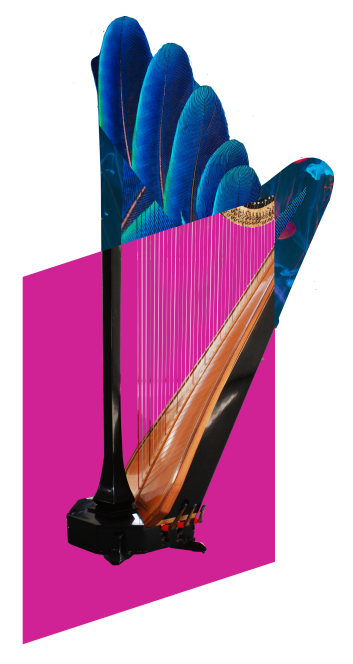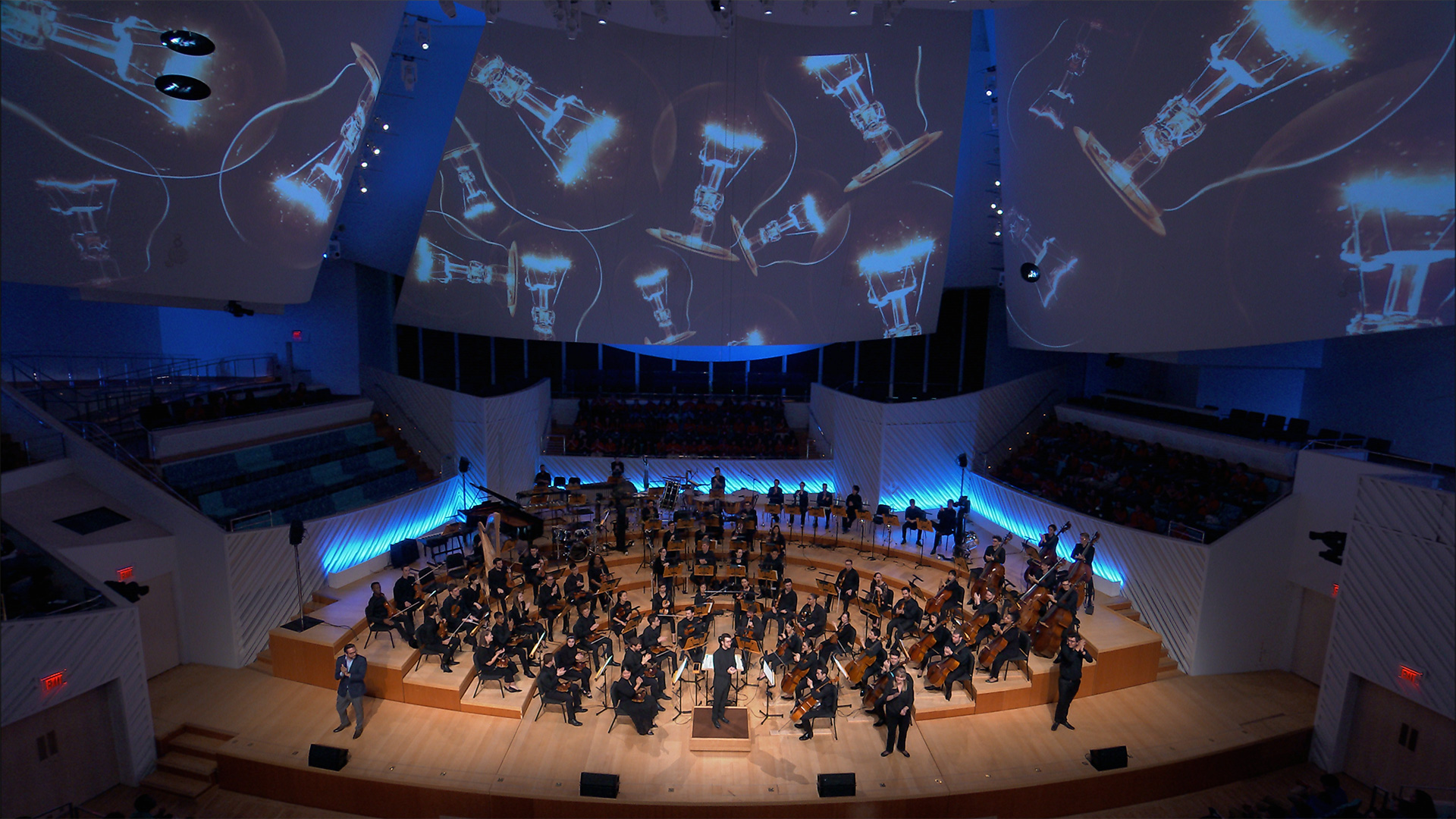Groove Machine

Goals
Audience will explore the effect of overlaying multiple distinct rhythms.
Overview
To introduce a piece with a groove and share how a performer might experience rhythm, get the audience involved in making their own groove.
Process
- Identify a piece on your program with a groove and/or interesting rhythms.
- Develop a 2-3 part rhythm, either based on the rhythms found in the piece, or any other rhythm that works together well to demonstrate the feeling of a groove. (See ex in script below)
- In the concert, divide the audience into 2-3 and assign each group a part. Have a performer from the orchestra/ensemble to lead each section of the groove. Each performer demonstrates their part and briefly rehearses with their group.
- Give an order for each rhythm’s entrance, and tell the audience to join in when their leader does. Perform the groove!
Audience Type

What does this activity look like in action?
Example Script:
Piece: Any orchestral piece with rhythmic ostinato elements.
Groove Rhythms:



Performer: (Walk out on stage in a stomp, stomp, clap pattern à la “We Will Rock You” rhythm. With the clap/body language, invite the audience to join. Cue cut off.)
“Clearly you already know what a groove is, because you were just doing one! And look at this, the groove inspired my friends to join in.”
(Two performers come on stage left and right, respectively. We’ll call them Beth and Roger).
“Hi Beth! Hi Roger! Since we have three people here, let’s try a groove with three separate parts.”
Right side of hall (house right) rehearses:
“Everyone in this section over here – Beth is going to be your leader, listen to her once. (Beth claps rhythm alone.) Now everyone on the right, let’s try this together with Beth!”
(Clap the right pattern.)
Middle rehearses:
“Everyone in this middle section – I’m going to be your leader. Listen once to our part of the groove. Okay people in the middle, let’s try it together.”
(Do the main rhythm)
Left side rehearses:
“Last but not least! Left side of the hall, let’s get your part going. Your leader will be Roger. Listen to him do it once. Now people on the left, join him!” (Do the right side pattern.)
“Amazing! Now that we have three parts ready to go, let’s put them together and see what that sounds like. We’ll start with the middle section. Right and left sides, watch your leader, and join in with your part when they do.”
(Do the full three part groove).

Modifications:
- Can be as simple as having the audience clap a single rhythm that will be used in the piece in order to recognize, internalize, and better connect with the piece. (Call and Response style). This can be developed all the way up to the full groove machine by adding a second part, or other elements of complexity.
- Can start a concert/segment with just the clapping engagement. Without speaking, clap a pattern, indicating for the audience to respond. This pattern can be built upon and made more complex.
- Listen: instruments in a chamber group can create their own groove, possibly to introduce their individual timbres at the beginning of a concert, or to introduce the idea of a groove at any point in a concert. See “Groove Machine: Orchestration”
Create interactive performances. We have activities to help you connect with your audiences.


